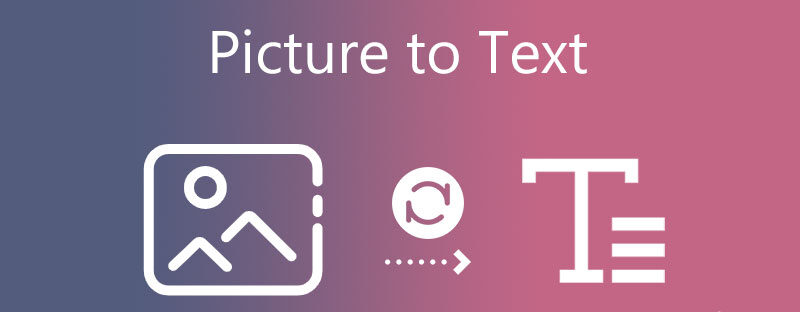Unlocking Productivity with Image to Text Converters
- 1 What is an Image-to-Text Converter?
- 2 How Do Image-to-Text Converters Work?
- 3 Practical Applications of Image-to-Text Converters
- 4 Advantages of Using Image-to-Text Converters
- 5 Top Image to Text Converter Tools
- 5.1 Adobe Acrobat Pro DC
- 5.2 ABBYY FineReader
- 5.3 Tesseract OCR
- 5.4 CamScanner
- 5.5 Microsoft OneNote
- 6 Challenges in Image-to-Text Conversion
- 7 Future of Image-to-Text Converters
- 8 Conclusion
- 8.1 FAQs
- 8.1.1 What is an image-to-text converter?
- 8.1.2 How accurate are image-to-text converters?
- 8.1.3 Can image-to-text converters recognize handwritten text?
- 8.1.4 Are there free image-to-text converter tools available?
- 8.1.5 How can I improve the accuracy of text extraction?
- 8.1.6 What are the best OCR tools for professional use?
In today’s digital age, the ability to efficiently convert images into editable text is a game-changer for many industries. Image-to-text converters, powered by Optical Character Recognition (OCR) technology, are at the forefront of this transformation. These tools streamline the extraction of text from images, making it easier to manage and utilize information. This blog explores image-to-text converters’ capabilities, benefits, and leading tools, highlighting their practical applications and future trends.
What is an Image-to-Text Converter?
An image-to-text converter is a software application that uses OCR technology to analyze and extract text from images. These images can include scanned documents, photographs, screenshots, and handwritten notes. The extracted text is then converted into a digital format, making it editable and searchable, which enhances data management and accessibility.
How Do Image-to-Text Converters Work?
The conversion process typically involves several steps:
- Image Preprocessing: Enhances image quality by adjusting contrast brightness and removing noise to improve text recognition accuracy.
- Text Detection: Identifies regions within the image that contain text.
- Character Recognition: Uses advanced algorithms to recognize each character and convert them into digital text.
- Post-Processing: Refines the extracted text by correcting errors and formatting it appropriately for readability.
Practical Applications of Image-to-Text Converters
Image-to-text converters have a wide range of applications across various fields:
- Document Digitization: Converting paper documents into digital formats for efficient storage, search, and retrieval.
- Data Entry Automation: Extracting text from forms, receipts, and invoices to automate data entry processes.
- Educational Resources: Digitizing printed educational materials for easier distribution and accessibility.
- Enhancing Accessibility: Converting printed text into digital formats that can be read aloud for visually impaired individuals.
- Language Translation: Translating text within images into different languages to facilitate communication and understanding.
Advantages of Using Image-to-Text Converters
The benefits of image-to-text converters are extensive:
- Efficiency: Automates the text extraction process, significantly reducing the time and effort required compared to manual transcription.
- Accuracy: Advanced OCR technology ensures high accuracy in text recognition, minimizing errors.
- Versatility: Capable of processing various text types, including printed, handwritten, and multilingual text.
- Cost Savings: Reduces the need for manual data entry, leading to lower operational costs.
Top Image to Text Converter Tools
Several tools stand out for their exceptional capabilities and user-friendly features:
Adobe Acrobat Pro DC
Adobe Acrobat Pro DC offers robust OCR functionalities, allowing users to convert scanned documents and images into editable PDFs. It supports multiple languages and provides advanced features like batch processing and text recognition.
ABBYY FineReader
ABBYY FineReader is renowned for its high accuracy and extensive language support. It offers a range of features, including text recognition, document comparison, and conversion to various formats like Word and Excel.
Tesseract OCR
Tesseract OCR, an open-source engine, provides powerful text extraction capabilities. It supports over 100 languages and is favored in academic and research settings for its flexibility and customization options.
CamScanner
CamScanner is a mobile app that turns your smartphone into a powerful scanner with OCR capabilities. It is ideal for capturing and digitizing text from documents, receipts, and business cards on the go.
Microsoft OneNote
Microsoft OneNote integrates OCR functionality, allowing users to extract text from images added to notes. This feature is handy for quickly capturing and digitizing information from various sources.
Challenges in Image-to-Text Conversion
Despite their benefits, image-to-text converters face several challenges:
- Quality of Input Images: Low-quality photos can lead to inaccuracies in text extraction.
- Complex Document Layouts: Documents with intricate layouts, such as tables or multi-column text, can be difficult for OCR software to process accurately.
- Handwritten Text: Recognizing handwritten text remains a challenging task, although advancements are continually being made.
Future of Image-to-Text Converters
The future of image-to-text converters is promising, with continuous advancements in AI and machine learning driving improvements:
- Enhanced Accuracy: Improved algorithms will increase text recognition accuracy, even under challenging conditions.
- Real-Time Processing: Faster processing speeds will enable real-time text extraction and translation.
- Cloud Integration: Greater integration with cloud services will enhance accessibility and efficiency.
Conclusion
Image-to-text converters are transforming the way we handle textual information from images. Their ability to quickly and accurately convert text into editable formats not only saves time but also boosts productivity across various sectors. As technology evolves, these tools will become even more sophisticated, offering greater accuracy and expanded features. Embracing these innovations can significantly streamline workflows, reduce costs, and unlock new possibilities for data management and accessibility.
FAQs
What is an image-to-text converter?
An image to text converter, or OCR software, extracts text from images and converts it into an editable digital format.
How accurate are image-to-text converters?
The accuracy of these tools depends on the quality of the input image and the sophistication of the OCR software. Leading tools like ABBYY FineReader and Adobe Acrobat Pro DC offer high accuracy rates.
Can image-to-text converters recognize handwritten text?
Yes, some advanced OCR tools can recognize handwritten text, although the accuracy varies based on the handwriting style and image quality.
Are there free image-to-text converter tools available?
Yes, tools like Google Keep and SimpleOCR offer basic text extraction features for free.
How can I improve the accuracy of text extraction?
To improve accuracy, use high-quality images with clear text, and opt for advanced OCR tools with robust preprocessing features.
What are the best OCR tools for professional use?
Adobe Acrobat Pro DC, ABBYY FineReader, and Tesseract OCR are highly recommended for their advanced features and high accuracy rates.

















